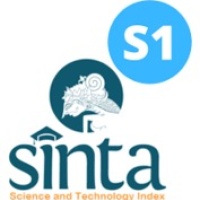Title
Writing Guideline
The title must be clear, precise, concise, consist of research finding and no more than 10 words. without mentioning locations, words 'analysis' and 'juridical review'.
Technical Guide
Font Calisto MT 16pt, bold (bold), capital letters only at the beginning of the word.
Affiliation
Writing Guidelines:
The affiliation contains; (1) the author's full name without a title, (2) the author's affiliation/institution, and (3) the author's e-mail address.
Technical Guide
Author's name : Font Calisto MT 12pt and bold
Author affiliation/agency : Font Calisto MT 12pt
Author's e-mail : Font Calisto MT 12pt and underlined
Abstract
Writing Guidelines:
Article manuscripts must be accompanied by an abstract in English. The abstract is written in a concise, clear, independent, and complete manner, describing the essence of the contents of the entire article. Abstracts are written within 200-300 words. Abstracts must be able to provide information to readers about the background, objectives, methods, and results of the research. Use the right diction so as to be able to describe the results of your research effectively.
Technical Guide:
Font Calisto MT 12pt and single spacing.
Keywords
Writing Guidelines:
Use 3-5 keywords/keyphrases separated by semicolons (;). Use keywords that reflect your article idea. Without mentioning the name of the Institution, rules, and location.
Technical Guide:
Font Calisto MT 12pt, between keywords separated by a semicolon (;)
Introduction
Writing Guidelines:
The introduction contains the background for writing articles containing academic anxiety and can be supplemented with statistical data. The author should include previous studies (literature review) to demonstrate the pioneering research. Previous studies come from scientific journal articles that have been published previously. This is to show the state of the art. Minimum 10 articles published in the last 3-5 years. The author should indicate the advantages and disadvantages of previous research, then indicate what you expect from your work (to solve these limitations) formulated in the research objectives. Reference in the form of the latest journal articles for the last 3-5 years. Ideally, the introduction is 10% of the total words in the discussion. The background contains the main questions on the issues to be discussed and solutions are sought. If the result of the paper is an empirical research that uses a certain method, it can be explained how the method is applied. In addition, the background contains the main argument as the answer to the main question above.
Technical Guide:
Font Calisto MT 12pt and single spacing.
Discussion
Writing Guidelines:
Research results must be written clearly and concisely. Research results should summarize research findings rather than detailed data.[1] It is recommended to provide a review of the differences between your results or findings with previous studies.[2] The discussion is the most important part of your article. Here you get a chance to explore your data.[3] It usually starts with a summary of the research findings and then discussed various theories or related references. The theory or the reference used must be accompanied by a clear reference source. The study of theory became an integral part of the subtitle Results and Discussion. Discussion between 6000-8000 words.
Technical Guide:
Font Calisto MT 12pt and single spacing. It is not allowed to use bullets and numbering in subtitles or body text. If there are numbers in sentences or in discussions, they are written directly in paragraphs using numbers in brackets. For example; The family has several main functions, including (1) educational functions; (2) Religious Functions; (3) Economic Functions; (4) and so on.
Conclusion
Writing Guidelines
Conclusions must answer the research objectives that are formulated briefly and effectively. The conclusion is not a summary of the discussions that have been carried out. Conclusions are expected to contain theoretical implications that contain how your research or thoughts can advance the scientific field of family law. Without a clear conclusion, reviewers and readers will find it difficult to judge your work. You should also suggest future research and/or show future researchers what to do. Respond to objectives and comment on findings. Recommendations and/or implications. Conclusions do not need references and statistical data.
Technical Guide
Font Calisto MT 12pt and single spacing.
Bbilography
Writing Guidelines:
Guidelines for writing footnotes and reference lists using Chicago Citation Style 17th (full note). The method of citing and writing is recommended using a reference manager (Zotero or Mendeley).
Author Contribution
For transparency, we encourage authors to submit an author statement file outlining their individual contributions to the paper using the relevant CRediT roles: Conceptualization; Data curation; Formal analysis; Funding acquisition; Investigation; Methodology; Project administration; Resources; Software; Supervision; Validation; Visualization; Roles/Writing - original draft; Writing - review & editing. Authorship statements should be formatted with the names of authors first and CRediT role(s) following. More details and an example.






